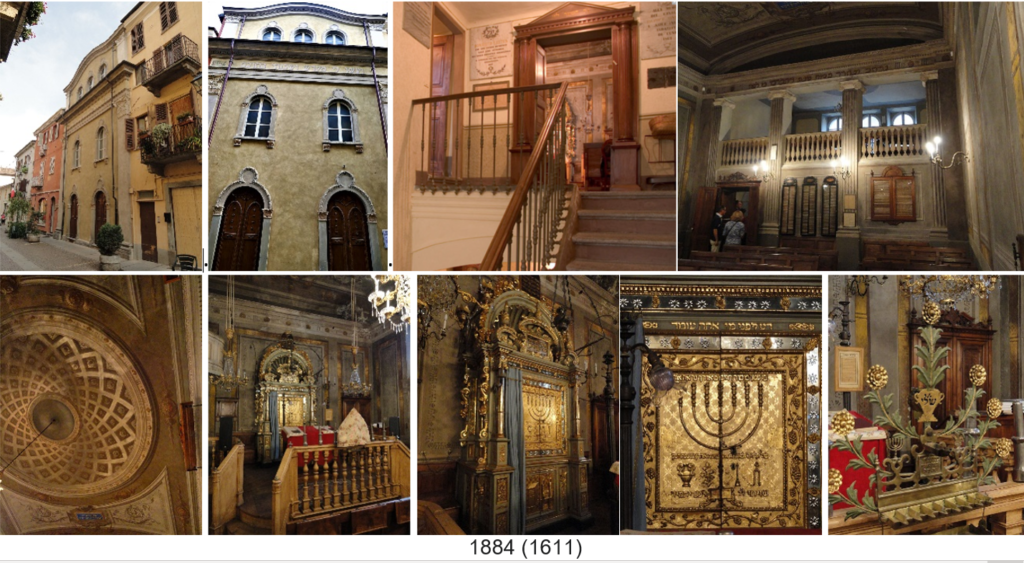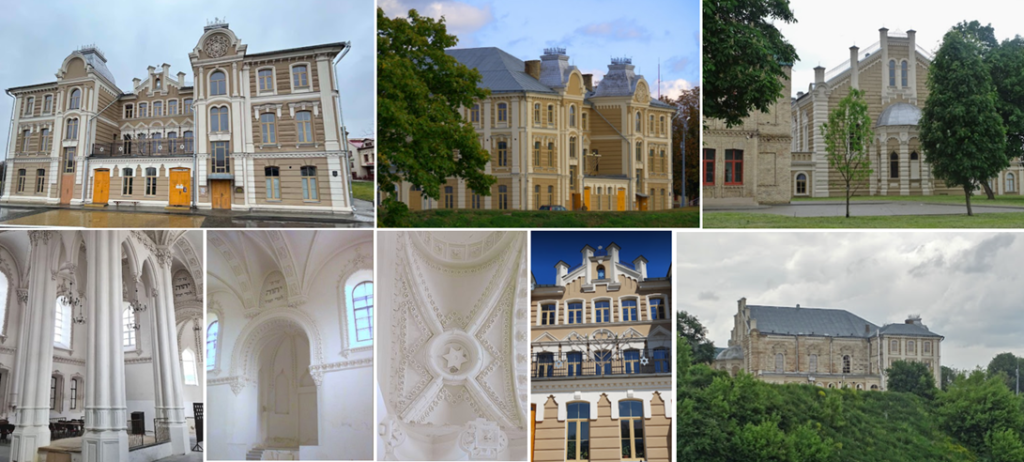
The parsha begins with the phrase וְאֵלֶּה (and behold) which introduces a new dimension to what has been formulated previously. It is the continuity of the ten commandments. In this parasha are promulgated laws on the following subjects: the widow, the orphan, the bride, the parents, the slave, the foreigner, the convert, the courts, the judges, the damage caused to others, the princes , idolatry, Shabbat, shmita, festivals, etc.
L’Orfana Del Ghetto (The Orphan Of The Ghetto), a novel written by Carolina Invernizio in 1899, gives an insight into life in the Cuneo ghetto where the synagogue built in 1611 is located. In 1884, the synagogue was completely renovated in a baroque style, and a facade, opening onto the street by two arched doors reminiscent of the tables of the law, is added. On the ground floor, a library collects texts on the history of the Jews of Piedmont. On the first floor in the prayer hall there is a painted wooden arch, an example of the Venetian Baroque style. On the second floor is the matroneum (עזרת נשים = ezrat nashim).
The Jewish community of Cuneo was once one of the largest in PiedThe Jewish community of Cuneo was once one of the largest in Piedmont. Now reduced to a few families, the synagogue is however still in use.



